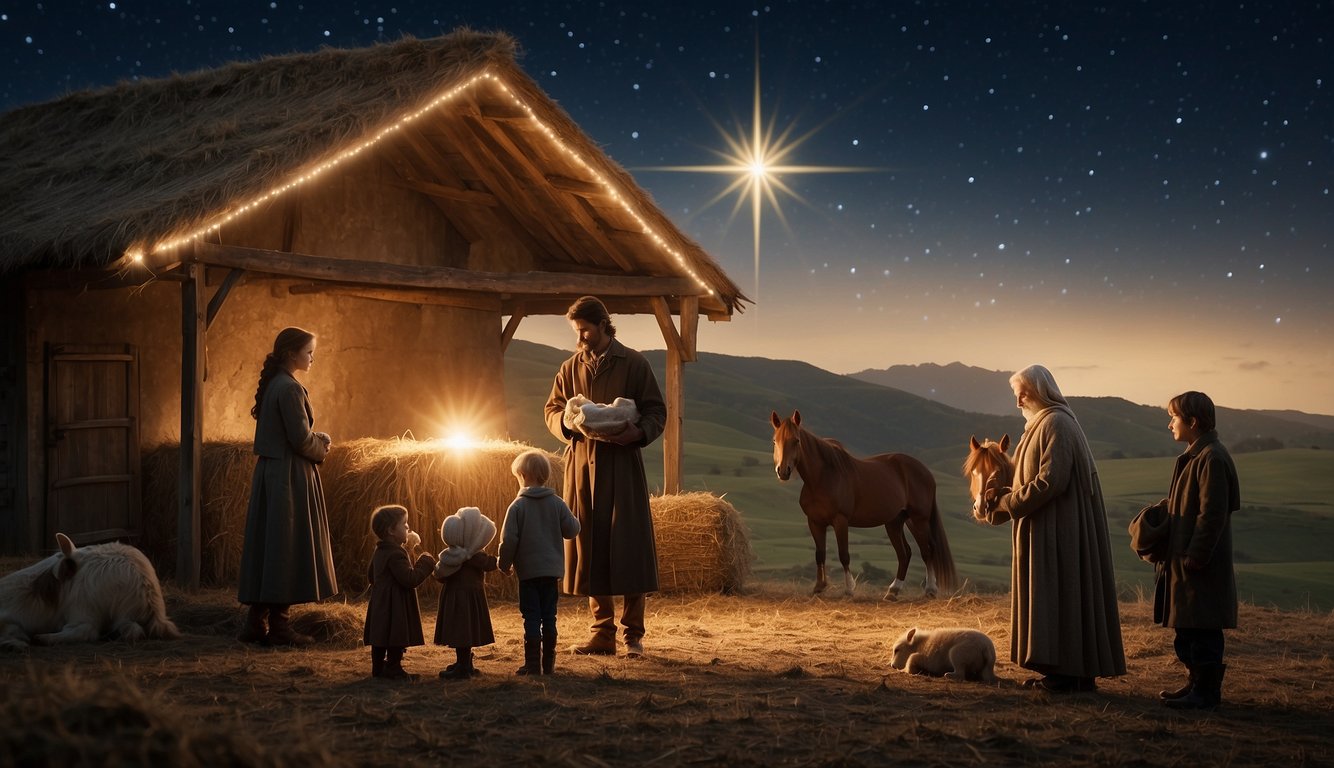The Christmas Story as in the Bible
The Christmas story, as narrated in the canonical texts of the Bible, is a central event in Christian tradition, commemorating the birth of Jesus Christ. This tale is recounted primarily in the Gospels of Matthew and Luke, which offer differing perspectives. Yet, both agree on the essential fact that Jesus was born to Mary in Bethlehem.
The Gospels describe the miraculous nature of this birth, including the divine announcement by the angel Gabriel, the virgin conception by the Holy Spirit, and the fulfilment of Old Testament prophecies.
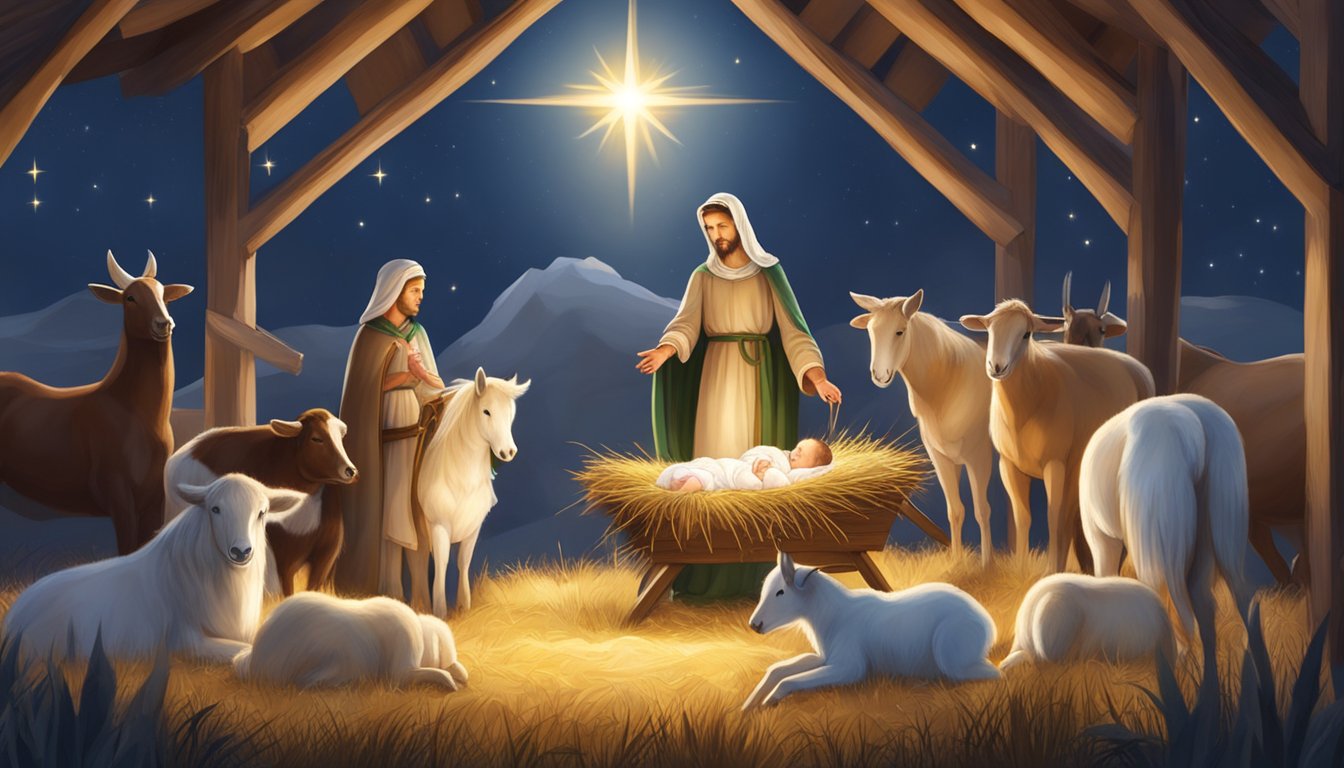
Throughout the biblical narrative, intricate details emerge that have shaped the Christmas traditions observed by millions around the world.
Luke’s Gospel provides the most detailed account of the nativity, depicting scenes of the census decree from Caesar Augustus, the journey of Mary and Joseph to Bethlehem, and the humble birth of Jesus in a manger, attended by shepherds heralded by angels.
In contrast, Matthew’s account focuses on the visit of the Magi, or Wise Men. They follow a star to honour the newborn king and present gifts of gold, frankincense, and myrrh.
While distinct, these accounts merge to form a foundational narrative celebrated in Christian theology and cultural festivities. The Christmas story encapsulates themes of hope, joy, and divine love—elements central to the religious ceremonies and holiday customs that define the season for believers worldwide.
Prophetic Foretelling
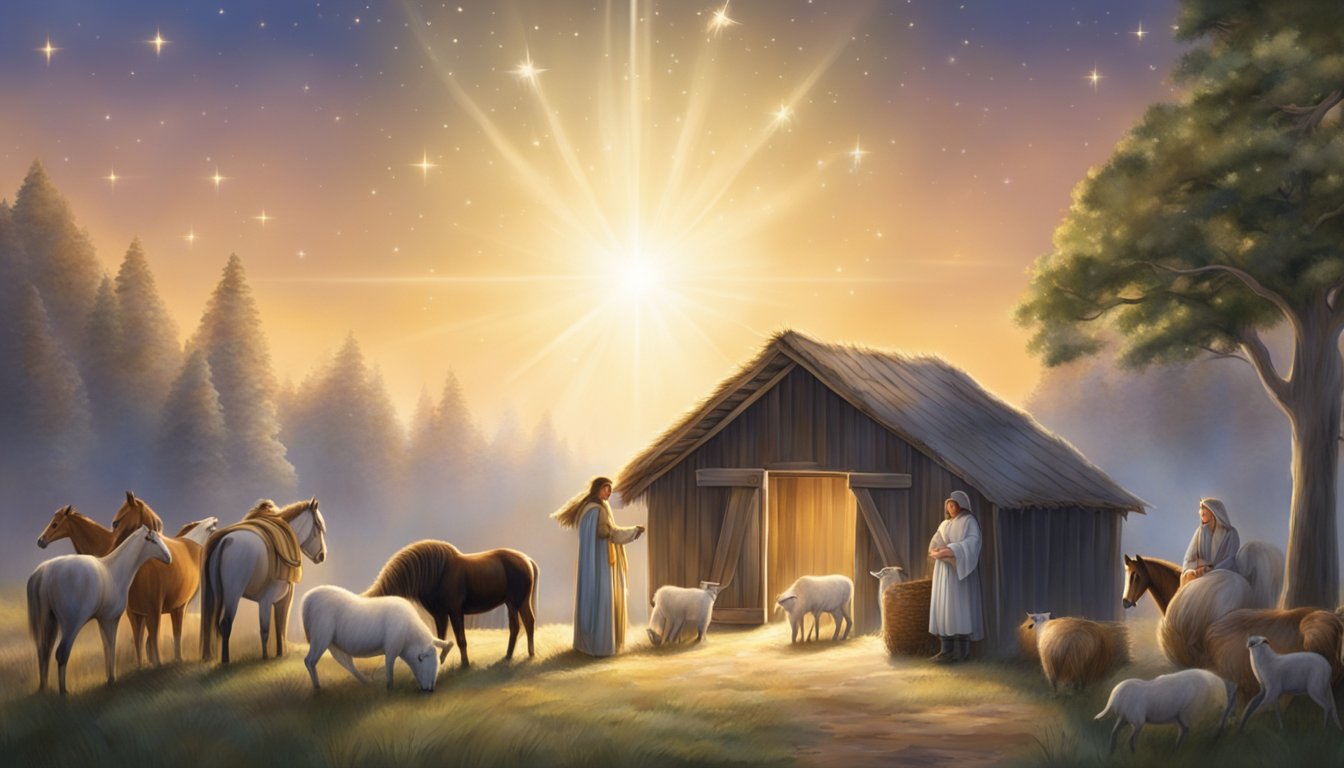
As the Bible recounts, the Christmas story includes specific prophecies that foretell the birth of Jesus Christ. These prophecies are essential to the narrative, providing divine anticipation for the event.
Isaiah’s Prophecy
The prophet Isaiah offers one of the most poignant predictions about the coming of a messianic figure. Isaiah 7:14 states, “Therefore the Lord himself will give you a sign: The virgin will conceive and give birth to a son and will call him Immanuel.” This signifies the virgin birth of a child known as God with us.
Micah’s Prophecy
Another significant prophecy comes from Micah, who pinpoints the birthplace of the future Messiah. Micah 5:2 specifies, “But you, Bethlehem Ephrathah, though you are small among the clans of Judah, out of you will come for me one who will be ruler over Israel, whose origins are from of old, from ancient times.” Thus, the text locates the nativity in the seemingly insignificant town of Bethlehem.
The Annunciation

The Annunciation in the Bible depicts the moment when the Angel Gabriel announces to Mary the birth of Jesus, and Joseph’s dream reassures him of Mary’s divine pregnancy.
Angel Gabriel Visits Mary
In the Gospel of Luke, the Angel Gabriel visits Mary, a virgin in Nazareth. Gabriel greets her with reverence and proclaims her highly favored by God.
Mary learns she has been chosen to bear a son, Jesus, who is destined to be called the Son of the Most High.
The angel explains that the Holy Spirit will come upon her, and the power of the Most High will overshadow her, making the birth holy.
Joseph’s Dream
Joseph, betrothed to Mary, is troubled when he learns of her pregnancy. However, an angel of the Lord appears to him in a dream.
The angel addresses Joseph as the son of David and instructs him not to fear taking Mary as his wife.
The angel confirms that the child conceived in her is from the Holy Spirit and instructs Joseph to name the child Jesus, for He will save His people from their sins.
Birth of Jesus
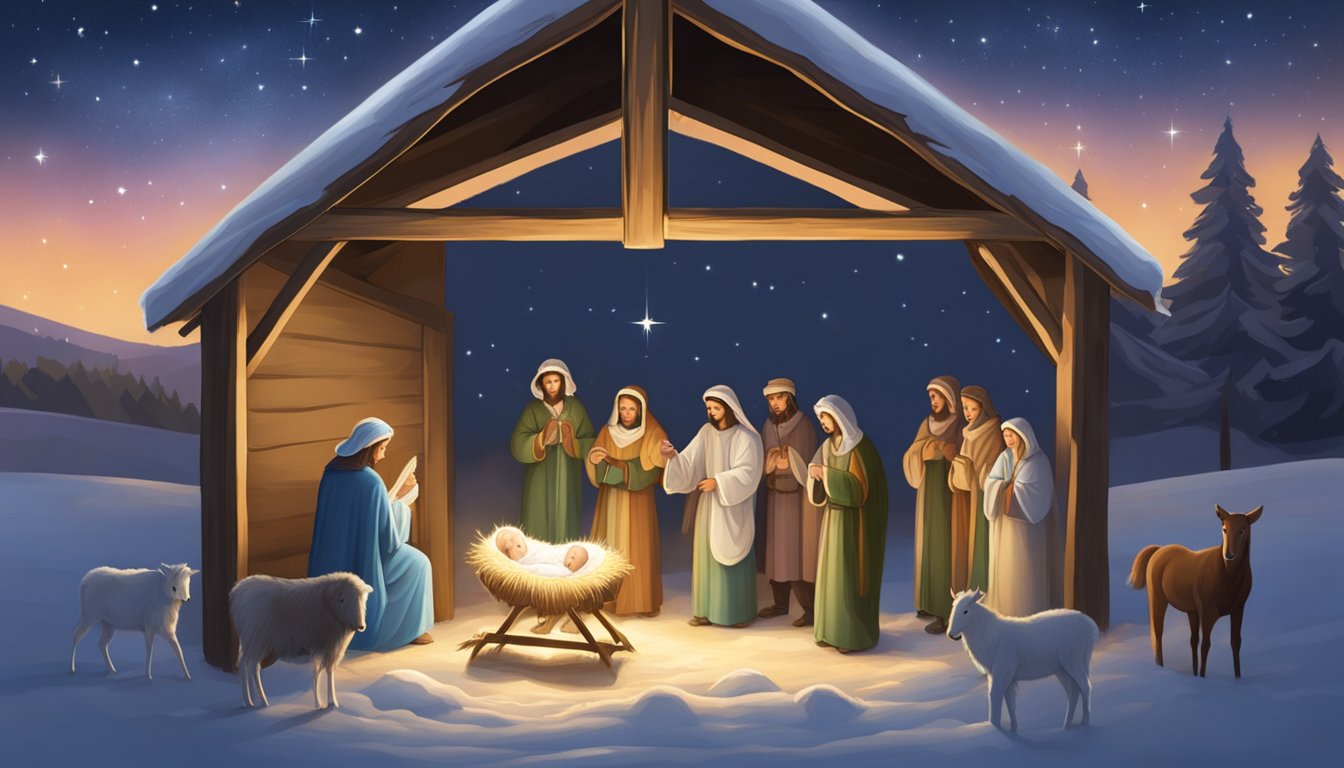
The birth of Jesus is a central event in Christianity, celebrated during Christmas. It involves a decree from Caesar, a journey to Bethlehem, and angelic announcements to shepherds.
Census and Journey to Bethlehem
Caesar Augustus issued a decree for a census, requiring everyone to register in their ancestral town.
Joseph betrothed Mary and travelled from Nazareth to Bethlehem because he was of David’s house and lineage. Mary, who was expecting a child, accompanied him on this journey.
In the Manger
Upon their arrival in Bethlehem, Mary and Joseph found no rooms in the inn. Consequently, Jesus was born in a humble setting, laid in a manger, a feeding trough for animals. This modest beginning is a significant aspect of the nativity story.
Shepherds and Angels
Shepherds were tending their flocks in the fields near Bethlehem when an angel of the Lord appeared, announcing the birth of a Savior, Christ the Lord.
They were told they would find the baby wrapped in cloths and lying in a manger.
A multitude of heavenly hosts joined the angel, praising God and heralding peace on earth.
The shepherds quickly went to Bethlehem and found everything, as the angel had said, before spreading the word about what they had witnessed.
The Magi
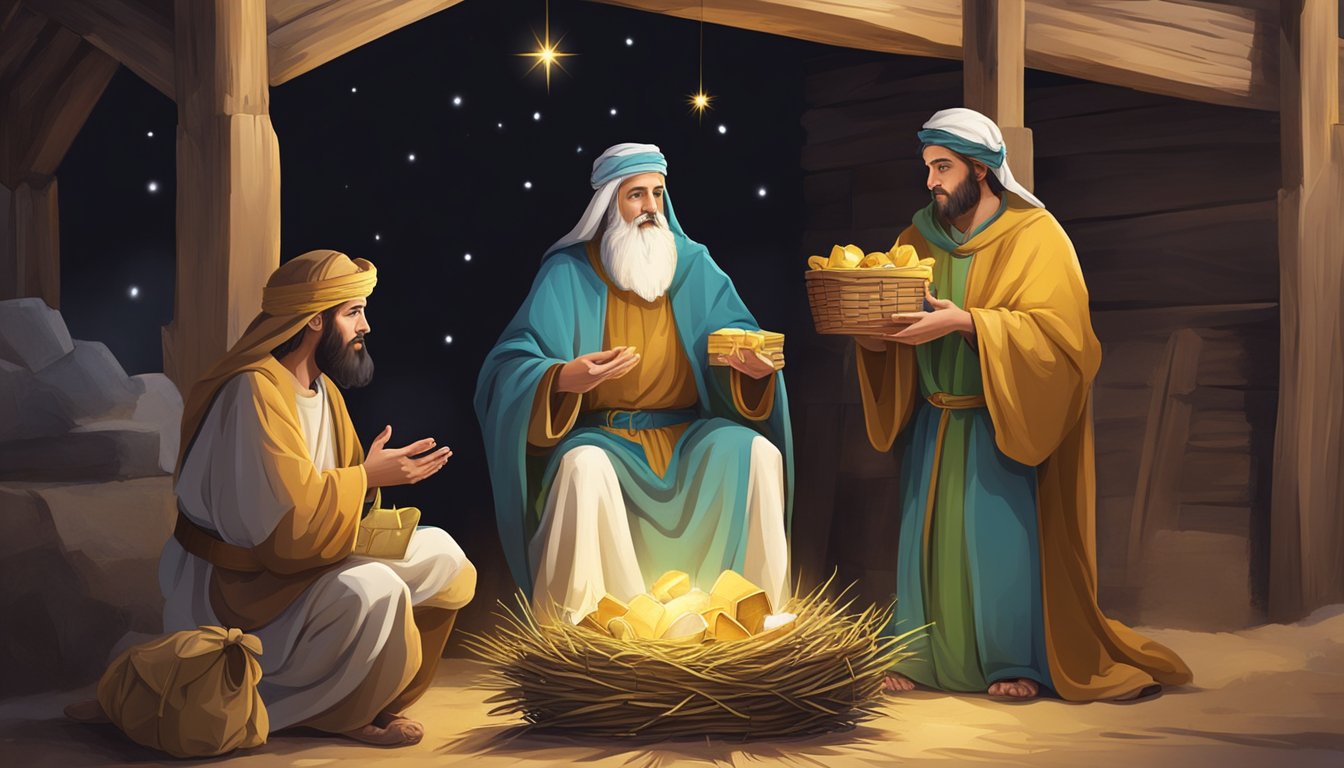
The Magi play a significant role in the biblical account of Jesus’ birth, referred to as Wise Men from the East guided by a celestial phenomenon, bestowing gifts upon the newborn and evading King Herod’s malicious intentions.
Star of Bethlehem
The Star of Bethlehem is described as the guiding light that led the Magi to Jesus. It symbolizes divine guidance and is a central element in understanding their journey.
Astronomical events, celestial navigation theories, or possibly symbolic literary devices have been proposed to explain the star’s representation in the narrative.
Gifts of the Wise Men
The Magi are famed for presenting three gifts:
- Gold, symbolizing kingship on Earth.
- Frankincense, representing deity and worship.
- Myrrh, foreshadowing death, due to its use in embalming practices.
These gifts reflect recognition of Jesus’ royal status, divine nature, and mortal destiny.
Herod’s Plot and the Escape
Upon meeting King Herod the Great, the Magi are asked to reveal Jesus’ location under the pretence of paying homage. However, they are divinely warned in a dream about Herod’s true intent to kill the child.
They avert the danger by discreetly leaving Judea, travelling home by a different route to elude Herod’s grasp.
Childhood and Growth
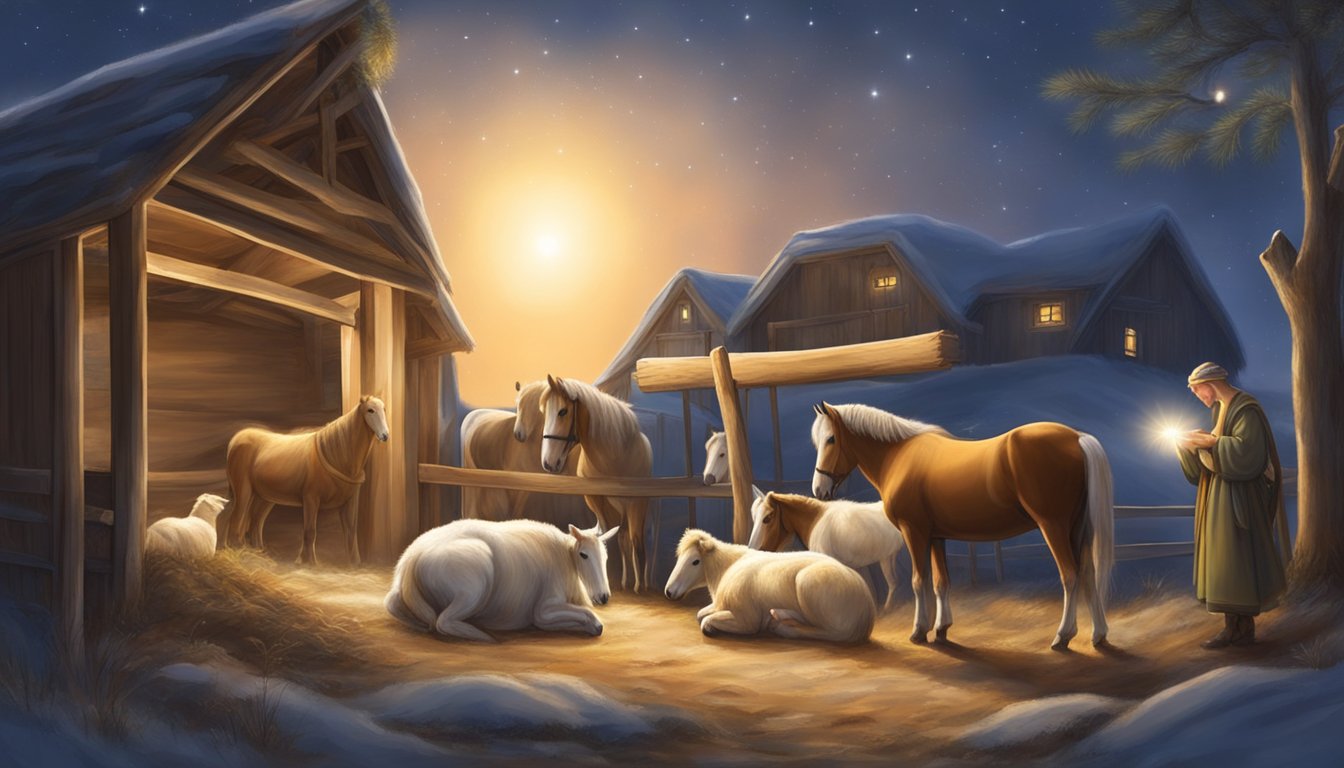
The Biblical narrative of Jesus Christ’s early years is sparse, highlighting a few significant events. These accounts emphasize His divinity, His fulfilment of Jewish customs, and the wisdom that set Him apart even as a child.
Presentation at the Temple
Following Jewish law, Mary and Joseph presented Jesus at the Temple in Jerusalem.
Luke 2:22-38 describes their encounter with Simeon and Anna, two devout individuals who recognized Jesus as the Messiah.
Simeon, moved by the Holy Spirit, blessed the family and spoke of Jesus’ destiny as a light for revelation.
Anna, a prophetess, gave thanks to God and spoke about the child to all who looked forward to the redemption of Jerusalem.
Visit to Jerusalem at Age 12
At the age of 12, Jesus travelled with his parents to Jerusalem for the Feast of the Passover, as recorded in Luke 2:41-52.
They departed the city after the festival, unaware that Jesus had stayed behind.
Upon returning to Jerusalem in search of Jesus, they found him in the temple courts, sitting among the teachers, listening and asking questions.
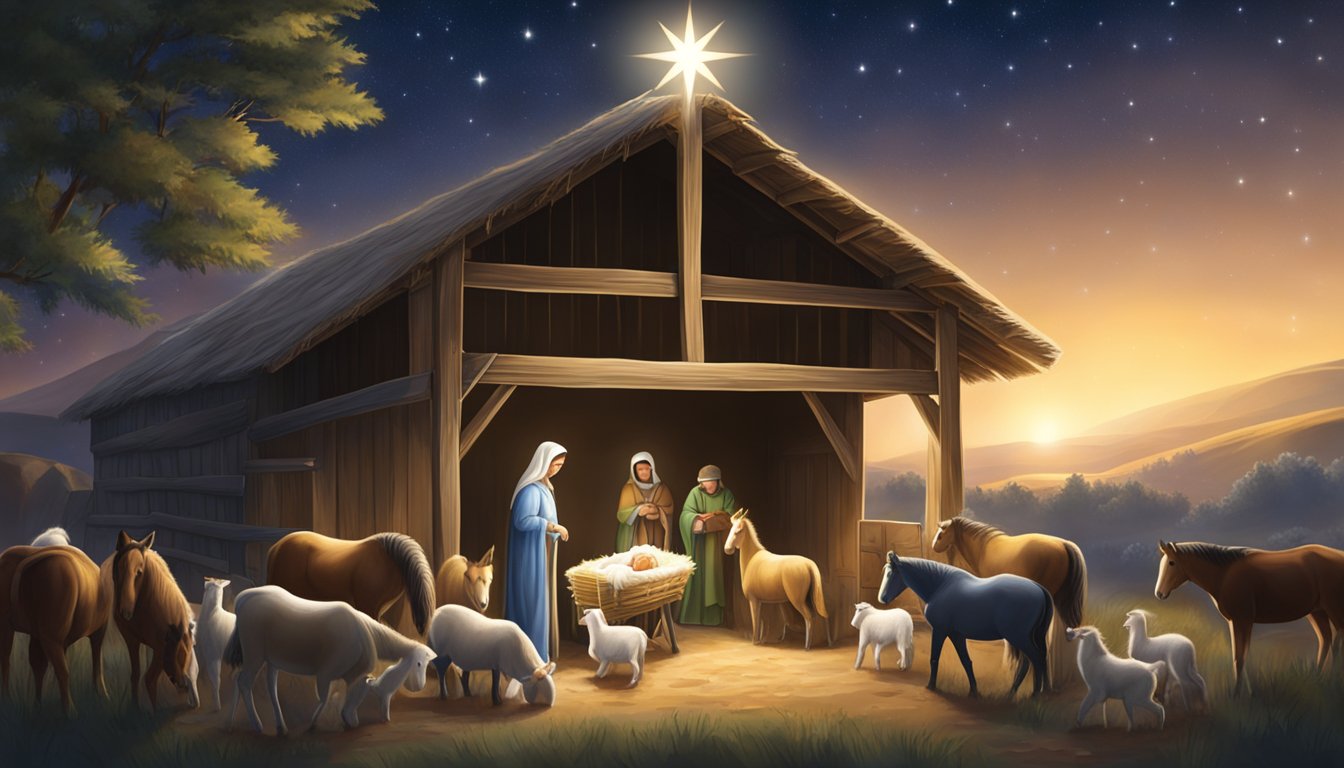
The Christmas story, as chronicled in the Bible, communicates an event of profound significance for Christians worldwide. This narrative details the birth of Jesus Christ, highlighting themes of hope, love, and divine purpose.
The accounts are found in the Gospels of Matthew and Luke, each contributing unique details to the birth of Jesus.
In Matthew’s account, readers are introduced to the angel’s message to Joseph, the journey of the wise men, and Herod’s cruel decree.
Luke’s Gospel provides insights into the annunciation to Mary, the census that led Joseph and Mary to Bethlehem, and the adoration by the shepherds.
These stories are linked by prophecies from the Old Testament, positioned as the fulfilment of God’s promises to humankind. They emphasize Jesus’ humble beginnings in a manger, signalling a Messiah who relates to the lowliest and the loftiest.
The themes validating the Christian belief in Jesus as the saviour and the incarnation of God’s love are at the heart of the Christmas story. Christmas time, therefore, serves as a yearly reminder of the birth that Christians believe changed history forever.
The biblical narrative continues to resonate as a cornerstone for Christmas celebrations, transcending time to reaffirm the tenets of Christian faith annually.

